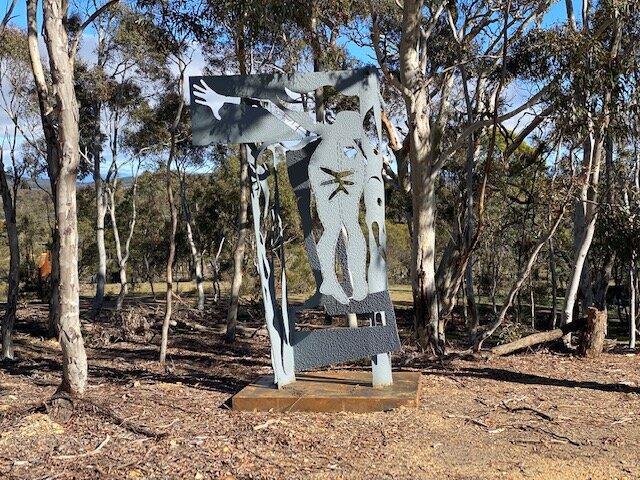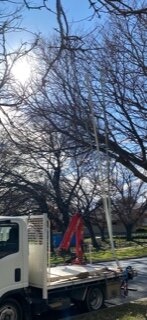Road marking, Balmain
What is particularly striking here is the clean break of the lines.
Normally these kinds of lines bend, before they break.
These lines travel fast, or normally when we look at them we are travelling fast, faster than walking, certainly. Generally we don’t notice them unless we are driving or being driven.
Double lines too demand close attention. You are forbidden particularly from crossing two lines.
When you make a mistake, at school, it is particularly galling to have mistakes doubly underlined. Two lines rub in the mistake.
Double lines take and hold the eye.
They have certainty and authority.
Double lines travel in a straight line or they bend. They are flexible, rubbery, like the road, compatible with the way cars turn according to shapes delivered by steering.
Road markings generally, provide the score for the driver, not to interpret, but to follow, as if interpretation and safety are unrelated.
For these reasons the image above is quite troubling. These lines do not bend, they break. They are suddenly fresh, like celery.. This is blanched celery snapped like celery can do at the wrong part of the stalk when you want to eat it. These white lines have a celery length to them, in relation to their width.
We don’t want fresh white lines that break. The car won’t deliver a turn with a sharp corner.
Because the lines are quite compact, they can be taken in at a glance. Because the lines function so poorly as road markings, they qualify as art or at least they are sitting art’s test in the hope of qualifying.
Too flat to qualify as a sculpture, it’s quite like a painting though.
Also, this corner has an intimate pedestrian quality which dispels driver territorial marking. This foreignness enhances the scope for wider interpretation.
Celery


























